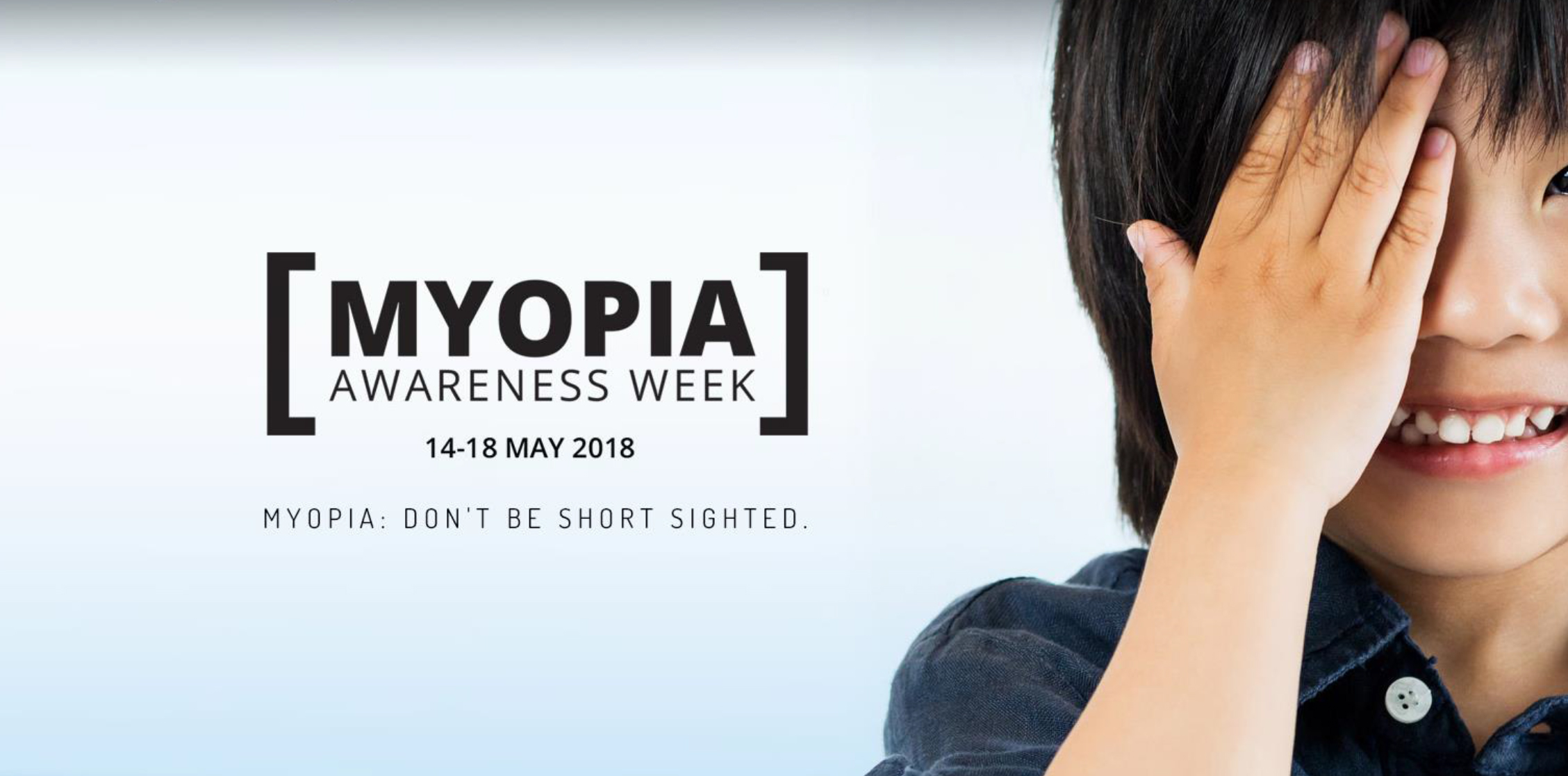1:30min

A screenshot of the Brien Holden Vision Institute’s Myopia Awareness Week microsite
_____________________________
By Helen Carter
Journalist
A pilot myopia awareness week kicked off in NSW today to raise awareness of an ‘alarming increase in prevalence’ in Australia and highlight the critical role that optometrists play in detecting and treating myopia.
Studies around Sydney have shown a doubling of rates of myopia in recent decades. It is predicted that in 2020, more than one-third (36 per cent) of Australians will be short or near-sighted (myopic) and by 2050, 55 per cent of the nation’s population will have the condition.
Myopia Awareness Week NSW goes from May 14 to 18 and features a microsite entitled Myopia: Don’t Be Short Sighted, offering a communications tool-kit and resources for practitioners and the public. The kit includes a link to Optometry Australia’s Find an Optometrist search engine.
The website alerts people that myopia is a progressive condition but says progression can be controlled if detected early enough and optometrists can provide treatment options as standard glasses do not prevent the condition from progressing.
The week, which may extend nation-wide in future years, also aims to encourage optometrists to stay current with emerging trends in myopia control and management.
Optometry NSW/ACT collaborated with the Brien Holden Vision Institute (BHVI), the University of NSW’s School of Optometry and Vision Science and the Centre for Eye Health in the pilot campaign to bring myopia awareness to the community.
Audrey Molloy, Communications and Professional Services Officer at Optometry NSW/ACT, said the campaign was limited to NSW in terms of organisation.
‘But we hope to extend it to a national campaign in future years, based on the success of this year’s campaign and the lessons we learn from it,’ she told Optometry Australia.
‘Messages and short videos will be posted and tweeted across our social media channels. We encourage people to share, like and re-post to their friends and family, helping us to spread the messages about myopia.’
Optometrists feature
Documentary style videos on the site include a public awareness video which can be shared with patients, and a practitioner awareness video designed to support optometrists in the delivery of effective myopia management in practice.
Twelve myopia experts, including 10 optometrists, feature in the videos. They include former Optometry Australia president Dr Kate Gifford who says ‘the key message is that we don’t have to sit back and watch our children’s vision get worse every year. There are things we can do about it.’
BHVI optometrist Dr Monica Jong explains that wearing glasses does not cure myopia but relieves symptoms, and says optometrists have a key role in changing the mindset of the public.
Owner of Eyecare Kids SooJin Nam says she can see signs of children who are heading towards becoming myopic even before they are myopic and alerts parents to interventions including increased outdoor time.
Orthoptics professor Kathryn Rose says changes are often quite subtle in myopia early on and parents don’t readily pick up if a child has reduced vision, so she recommends children have eye checks when pre-schoolers, in middle school and before starting high school.
While environmental and genetic factors are thought to play a role in the development of myopia, Dr Jong said environmental factors were driving the increase worldwide, especially in countries where children did not spend much time outside.
BHVI CEO Professor Kovin Naidoo said in a media release: ‘We need to change how people, parents and children in particular, perceive this condition, especially the potential consequences to vision later in life if early treatment is not received.
‘As well as providing appropriate myopia management treatments, eye care practitioners have a role in this education process.’
By 2050, nearly five billion people globally will have myopia and almost one billion will have high myopia. High myopia significantly increases the risk of potentially blinding conditions developing later in life including cataract, glaucoma, retinal detachment, myopic maculopathy and macular degeneration.
People can share the information through #MyopiaAwareness2018 and Optometry NSW/ACT Facebook page.
Managing myopia program
Meanwhile BHVI is again running its online Managing Myopia Program starting June 12. Early bird registrations close today. The program offers 13 CPD points, including two therapeutic points, and takes just six hours to complete.
More than 840 optometrists have completed the course and 90 per cent report it has changed the way they manage myopia, 70 per cent are starting to use one new strategy to manage myopia and all gained confidence in myopia management.
Tagged as: Myopia, Patient management